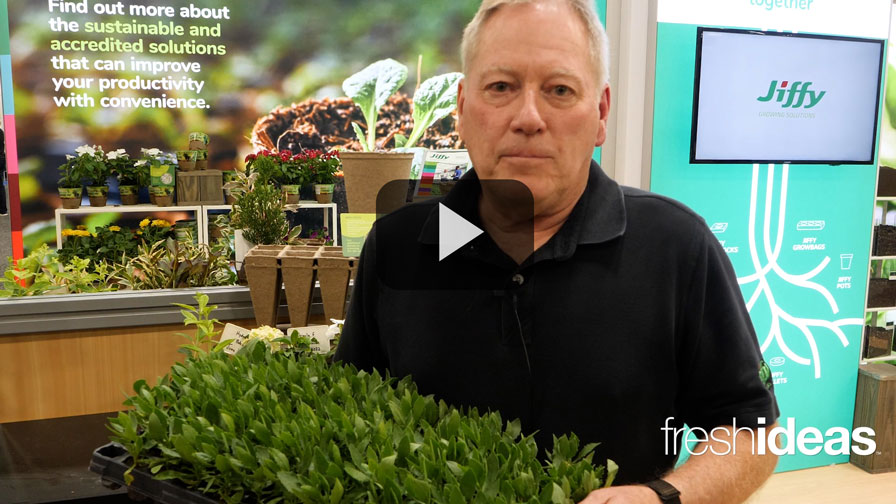Promoting The Benefits Of Plants

Is there any company in the green industry, from liner producers to retailers, suppliers and all points in between, that has experienced expansive growth in the last few years? Not likely. Sure, the recent economic downturn has affected many industries, but ours has suffered more than most. Not only have the primary drivers (commercial landscaping and housing starts) withered, but our customer base has shrunk and our products are becoming increasingly irrelevant.
The Baby Boomers, who were our bread and butter, have landscaped their now-empty nests and are not digging many more holes. The younger generations have failed to embrace the joy of creating park-like settings in their yards and are, for the most part, completely ignorant about plants. They see plants every day, but they don’t know their names and can’t distinguish one from another, so they remain strictly in the background. While most recognize beauty in plants, they don’t attribute any practical value to them. Many lack experience with plants, so when they do buy them, they perform poorly or expire. That leads to disappointment and a feeling that money has been wasted.
If products in a category are not vital in people’s lives, possess only aesthetic value and there is risk associated with purchasing them, it stands to reason that they will only command the most discretionary portion of people’s budgets; that which is reserved for luxury items. If this younger group represents our future market, we have to begin changing their attitudes now or there won’t be a future market.
At Bracy’s Nursery, we reached this conclusion after being invited to see Dr. Charlie Hall, holder of the Ellison Chair in International Floriculture at Texas A&M University, deliver his presentation entitled, “Marketing in the New Green Industry Paradigm.� He developed these themes and delivered keen insight into market trends, demographics, consumer behavior and, most importantly, the numerous tangible benefits plants provide to individuals and communities.
Plants Are Essential, Not Extra
According to Dr. Hall, to enjoy success in the long term, we must, as an industry, demonstrate more savvy in the ways we market our products. People make room in their budgets for the things they want and they make purchasing decisions based on the benefits they expect to receive. So, if we are to have any success with our offerings, we have to communicate the benefits they deliver so that people will want them and be willing spend their money on them. We have to take a class of products (plants) and position them so they are perceived as necessities in people’s lives rather than luxuries.
Fortunately for us, there is a body of research proving that plants and landscaping deliver many economic, health and social benefits. Plants are known to reduce energy consumption, childhood obesity, crime, community infrastructure repair costs and the number of pollutants in the air we breathe. At the same time they increase home values, business appeal, commercial property occupancy rates and community cohesion. Plants also speed healing in the sick, help children develop socially and emotionally and make our streets safer to drive on.
The list of real, tangible benefits attributable to plants and landscaping is too long to feature within the confines of this article. The research is legitimate and it is our responsibility as green industry professionals to create public awareness around this message.
Getting The Word Out
Creating awareness and changing consumer attitudes is no small task, and it is not one that can be accomplished quickly. It will take a concerted effort on a broad scale to create enough impressions to allow the message to sink in, but we have to start somewhere. As a wholesaler, Bracy’s Nursery does not have a great deal of contact with the general public, but its customers do. In order for us to help get the message out, we created the Sell the Benefits point of purchase (POP) display package. It consists of five full-color, double-sided Corflute signs that may be distributed throughout a retail setting. Each piece describes a plant/landscape benefit that consumers can easily relate to, so the impact is immediate. A few have QR codes consumers can scan to take them to websites offering more detailed information on the subject. The multiple pieces reinforce the central theme, act as a conversation-starter and, hopefully, inspire consumers to purchase plants.
The concept of Sell the Benefits has been well-received. After debuting in late January, the package is being displayed in 50 or more independent garden centers throughout the Southeast. The pieces are attractive and compelling, so they contribute to the ambiance of the location. Retailers report that the benefits communicated — increasing home values, aiding child development, reducing energy use, and bolstering business — resonate with their customers. They ask questions and show genuine interest. These are benefits people desire, and they want to know how plants can deliver them. The challenge is to have their staffs conversant with the subject so they can respond and sell effectively. It is still too early to tell the sales impact, because as of this writing, spring has yet to really kick off.
More Voices Mean A Louder Message
Sell the Benefits is an effort on our part to help our customers grow their businesses by promoting plant sales in general. It doesn’t promote any specific plant and Bracy’s presence in the pieces is quite subtle. The package is offered to our customers at cost or it is free with qualifying purchases. It may be viewed at Bracys.com. Selling the benefits of plants is not something Bracy’s wants to keep for itself. We invite everyone in the green industry to join in. If anyone wants more information or needs help getting started, I would love to talk to you. We are all in this together.









